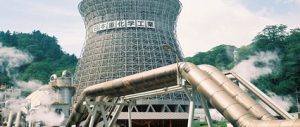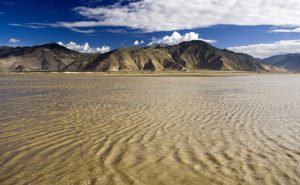After months of turmoil, on September 14 the Democratic Party of Japan (DPJ) announced a new energy policy. As Japan’s Asahi newspaper correctly argues, the policy is chock full of contradictions and escape clauses. Even so, the policy will almost certainly – perhaps in the course of this month – be adopted as is by the cabinet and frame the new “energy basic plan” put out by the Ministry of Economy, Trade and Industry (METI).
The energy policy’s main components, so far as much of the domestic and international debate are concerned, are a commitment to withdraw from nuclear energy by the 2030s and emphasise renewable energy. An example of international reaction is the September 14 declaration by the Financial Times that Japan’s “decision to phase out nuclear power has sent shockwaves through the energy industry, and could affect everything from global gas prices to the business of making and selling solar panels.”
Certainly the policy is different from the June 2010 plan that committed Japan to getting over half its power from nuclear plants by 2030 and included a reluctant nod to renewables (20% of power by 2030). That policy announcement was followed by Fukushima, of course, and Japanese energy politics and policymaking continue to be profoundly shaken by it.
In particular, energy policy is no longer the technocratic exercise it was before Fukushima, when it was dominated by METI and the “nuclear village” of pro-nuclear monopoly utilities, big business, reactor-dependent communities and legions of politicians, bureaucrats and academics. Among the actors actually and effectively at the table now are other bureaucracies, non-nuclear local governments organised into increasingly coherent regional blocs, social-media mobilised civil society, renewable-investing big capital, SMEs, farm coops and households.
Imagine the DPJ’s challenge of representing all these interests. The party was never a compact vehicle to begin with, only achieving a certain brief coherence in the 2009 election campaign’s imperative of clearly differentiating itself from the long-governing Liberal Democratic Party (LDP). Now it faces an election campaign in the coming months while it attracts an abysmal 10% support in recent polls. Prime minister Noda Yoshihiko knows he needs to appeal to the powerful anti-nuclear, green-growth streams within his own party as well as in the public at large.
Asahi also notes, quite correctly, that other factors may wield significant influence before the election. The September 19 inauguration of the new Nuclear Regulatory Commission (NRC) may lead to further approvals for restarts. Among other problematic outcomes, more restarts could weaken incentives for energy conservation, deployment of renewable energy and progress towards a distributed energy economy.
On the other hand, post-Fukushima Japan is increasingly incentivised to move in the renewable direction by its feed-in tariff (FIT). The FIT was installed in late August 2011 by outgoing prime minister Kan Naoto. In the first month after it came into effect on July 1, the policy attracted 33,695 renewable projects worth about US$2 billion (12.6 billion yuan), well beyond what was anticipated. Led by local banks and credit unions, Japanese finance capital is opening its faucets in this direction.
Electricity is at the core of Japan’s “local production, local consumption” boom, and the FIT is the key policy accelerating it. So we need a sense of perspective: the new energy policy is interesting as a snapshot of Japan’s fluid energy politics, but the FIT serves as an important institutional conduit channelling that flow.
Flimsy no-nuke promise
The government’s pledge to pull the plug on nuclear power by the 2030s could prove to be a hollow promise, with few details yet given on how to achieve it, how quickly to proceed and how to reconcile contradictions along the way.
Observers see the policy as a product of compromise, and something prime minister Noda hopes will both get him re-elected in a party leadership race this month and win support from ordinary voters in the upcoming Lower House election. Noda himself is unwilling to dump nuclear power. It is instead what the public and many in his party have increasingly been demanding.
Noda himself leaned toward shrinking nuclear power by 2030 but not abolishing it. He would have preferred to keep it at 15% of the nation’s total energy makeup, according to aides. But Noda could not ignore demands from the public, which overwhelmingly called for a full phase-out by 2030. The government held open forums nationwide and solicited comments on the ideal future contribution of nuclear power. It offered two alternatives to zero-nuclear: 15% and 20-25%, both of which the public rejected.
“Noda needs to win the party’s presidential race first,” said a lawmaker close to him. “Some DPJ members working on his re-election team back zero nuclear energy. If they turned their backs on him, it would have cast a pall on the management of a new administration even if he was re-elected.” But the decision for abolition by 2039, albeit a decade later than 2030, provoked criticism, too.
The United States expressed concern over how Japan would manage plutonium generated in recycling spent fuel. And Yonekura Hiromasa, chairman of Japanese business federation Keidanren, the nation’s most powerful lobby, called Noda on September 13 to voice his opposition to zero nuclear power. Under pressure from both an international ally and business leaders, the administration included a clause at the last minute which allows leeway toward scrapping the policy entirely.
“Energy sources available to the nation have been significantly affected by factors such as fuel supply and development of technology in the global market,” the clause read. “It is extremely hard to predict how things may develop in the future and we should make sure that we are able to take a flexible approach.”
Furukawa Motohisa, national policy minister, insisted on retaining a clause that makes it a legal requirement for central and local governments to achieve the new energy policy. But in a session on the morning of September 14, the clause was taken out. With no legal basis behind the policy, the energy industry and local governments are not bound by it.
METI is expected to flesh out the policy’s details as it compiles the Basic Energy Plan this month. But that plan comes up for review every three years. There is no guarantee that an administration in power in 2015 will stick to it. “If a new administration is formed, the new energy policy could fall through,” said a senior official with the industry ministry, referring to the possible outcome of dissolving the Lower House for a snap election.
What appears in conflict with public sentiment and the overall target for the 2030s is the administration’s pledge to restart reactors as “important sources of electricity” if they are confirmed to be safe.
Since the 2011 nuclear disaster, officials have authorised two of Japan’s 50 reactors to resume activity. The restart came amid widespread public opposition. The Noda administration plans to approve further reactor restarts if the new NRC declares they are safe. The commission is due to be formed on September 19. That, however, could pave the way for Japan to slip back to the situation before the Fukushima disaster, in which it relied on nuclear energy for close to 30% of all electricity output. Once reactors are restarted, plant operators could step up their opposition to abolishing nuclear energy. It could also slow a nationwide drive to reduce energy use and sap momentum towards a nuclear-free future.
Plutonium plans unchanged
Recycling spent fuel is another question entirely. Despite pledging to end nuclear power, the administration offered no change to the problem-laden plan to reprocess spent nuclear fuel to obtain plutonium. Plutonium can be used to generate electricity, but it can also be used to produce nuclear weapons. Critics accuse the Noda administration of planning to stockpile plutonium, even as Japan turns its back on nuclear power. “It makes no sense that rectors will use recycled fuel when they will be decommissioned just a few decades later,” said Katsuta Tadahiro, an associate professor of nuclear power policy at Meiji University.
The government has envisaged bringing a fast breeder reactor on-line around 2050 to get the nuclear-fuel recycling project to take off. Meanwhile, the plutonium stockpile could raise questions about Japan’s motives for the nuclear-fuel recycling programme. “The international community will cast a suspicious eye on Japan if it retains large plutonium reserves that it cannot use at nuclear power plants,” said Yoshioka Hitoshi, a professor of history of science and vice president of Kyushu University.
Andrew DeWit is professor in the School of Policy Studies at Rikkyo University and an Asia-Pacific Journal coordinator.
This article was first published as Andrew DeWit, "Japan’s Energy Policy at a Crossroads: A Renewable Energy Future?" The Asia-Pacific Journal, Vol 10, Issue 38 No. 4, September 17, 2012.


